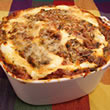CONGRATS!!!! I will DM you on Twitter for your info:)
Thanks everyone who played!!
A new giveaway will be coming up next week when I get back from vacation:)



 Waking up early has it's perks today... Hurry to request your free 1 year subscription to Taste of Home - America’s #1 Cooking Magazine! In every issue, you’ll enjoy 100+ home-style recipes & tips and mouth-watering meals your family’s sure to love.
Waking up early has it's perks today... Hurry to request your free 1 year subscription to Taste of Home - America’s #1 Cooking Magazine! In every issue, you’ll enjoy 100+ home-style recipes & tips and mouth-watering meals your family’s sure to love. 






The new School Year is upon us. This year my 4 year old will be going into Pre-K for more hours and this year I have to pack a lunch for him. I am so excited:) But entering preschool is a big step for any child. Parents and teachers can help children adjust by anticipating their needs and preparing them for their new school environment. Ideally transition efforts, such as visiting the preschool, should start several months prior to the child’s third birthday and/or the beginning of school. The goal is to familiarize the child with the teacher, classroom, and school; provide the teacher opportunities to “get to know” the child and plan more effectively before he/she becomes a member of the class; and provide parents with opportunities to become acquainted with the new teacher, class and school policies and procedures, and future classmates, and their parents.
Specific suggestions for successful transition planning for children entering preschool are:
· Set up an initial meeting with the teacher. Although this can take place at school, home visits give the child the chance to meet the new teacher in their own environment, which can reduce anxiety later and strengthen the sense of home-school connection, and allow the teacher the opportunity to get a firsthand sense of the child’s home environment.
· Plan a few visits to the new school that include spending time with the teacher, exploring the classroom, and playing on the playground. Decide ahead on an individual basis whether visits occur when other children are present.
· Parents should share any concerns or special considerations regarding their child, such certain fears, level of toilet training, food allergies, etc.
· Use pictures and/or stories to familiarize the child with their new classmates and teacher.
· Be sure the child is in good physical and mental health. Schedule doctor and dental checkups early. Discuss with the pediatrician any concerns you have over your child’s emotional or psychological development. The doctor can help determine if concerns are normal, age appropriate issues or require further assessment. Children benefit if potential issues are identified and addressed early. (See “Tips Regarding Young Children With Special Needs below)
· If the child has been in a different program already, encourage communication between receiving and sending teachers, particularly if the child has special needs or particular issues coping in the classroom.
· Allow the child to bring a favorite toy or belonging to school in order to increase his or her comfort level during the first few weeks of school. If your school allows it. Check first, ours does not allow outside things into school unless it is show and tell.
· Don’t over-react if the first few days are a little rough. Young children in particular may experience separation anxiety or shyness initially but teachers should be trained to help them adjust. If a child cries at drop off, parents should remain calm and positive. They should not linger but rather reassure the child that he will be okay and that they will be back soon.
· During the first few weeks of school teachers and parents should share information about how they think the child is adjusting to school.
· Ideally, parents should plan to spend extra quiet one-on-one time with their child during the first weeks. Keep the family schedule as simple as possible to allow for the new preschooler’s adjustment needs.
· Arrange play dates with a new friend (or friends) from school. Strengthening social bonds with classmates helps build children’s sense of familiarity and comfort level in school.
· If possible, parents should try to volunteer in the classroom at least periodically throughout the year. Doing so helps even children feel that their school and family life are linked. Being in the classroom is also a good way to develop a relationship with the child’s teacher and classmates, and to get firsthand exposure to their classroom environment and routine. Most preschool teachers welcome even occasional parent help.




















 |
Before freezing hot food, it's important to let it cool down. Heat will raise the temperature of the freezer; and the food will not freeze uniformly, the outer edges of the hot dish will freeze hard quickly while the inside might not cool in time to prevent spoilage.
There are just a few things to keep in mind:
Poorly wrapped foods run the risk of developing freezer burn and unpleasant odors from other foods in the freezer. Follow these simple wrapping and container tips to ensure the quality and safety of your food:
With the exception of muffins, breads, and other baked goods, do not thaw foods at room temperature. Bacteria can grow in the thawed portion of prepared foods, releasing toxins that are unsafe to eat even after cooking.
To ensure that your food is safe to eat, follow one of these proper ways to thaw:
In the refrigerator: This is the slowest but safest thawing technique. Small frozen items might thaw in a few hours, while larger items will take significantly longer--overnight and then some.
In cold water: Place the frozen food in a leak-proof bag and place in a large container of cold water.
In a microwave on the defrost setting: Plan to cook the food immediately after it has thawed in a microwave, because some areas of the food might have begun cooking during the defrost cycle.
Although freezing keeps food safe for an indefinite amount of time, eventually the flavor will be affected. If the food is obviously damaged (shriveled, with white or frosty spots) it should be discarded.
This chart lists recommended storage times for popular precooked foods--casseroles, soups, lasagna--to ensure high-quality results:
| Type of Food | |
| Tomato/vegetable sauces | 6 months |
| Meatloaf (any type of meat) | 6 months |
| Soups and stews | 2-3 months |
| Poultry and Meat Casseroles | 6 months |
| Poultry (cooked, no gravy) | 3 months |
| Poultry (with gravy/sauce) | 5-6 months |
| Meatballs in sauce | 6 months |
| Pizza dough (raw, homemade) | 3-4 weeks |
| Muffins/quick breads (baked) | 2-3 months |
A temperature of 0 degrees F (-18 degrees C) is best for maintaining food quality. Proper air circulation is key to keeping your freezer operating at maximum efficiency.
Freezing does not kill bacteria, yeast and molds that might be in your foods--it merely holds them at bay by keeping them inactive. If the freezer's temperature is disturbed often or altered for an extended period of time (such as a door left ajar or power outages) these microbes can compromise your food's safety.




